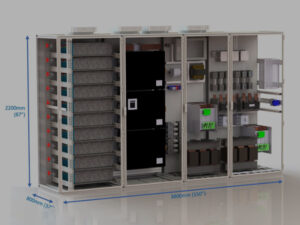Battery Cyclers, also known as battery analyzers or testers, are essential tools for evaluating and conditioning batteries. They play a vital role in ensuring battery performance, capacity, and longevity. However, with a wide range of options available in the market, selecting the right Battery Cycler can be a challenging task for engineers.
In this blog post, we will explore the key considerations that engineers should keep in mind when selecting a Battery Cycler. By understanding these factors, engineers can make informed decisions and choose a Battery Cycler that meets their specific EV battery testing needs.
1. Battery Chemistry and Compatibility
Different battery chemistries have unique charging and discharging characteristics. It is crucial to consider the battery chemistry and ensure compatibility with the selected Battery Cycler. Some cyclers are designed for specific battery types, such as lithium-ion, lead-acid, or nickel-metal hydride, while others offer compatibility with multiple chemistries. Ensure that the cycler supports the voltage and current ranges required for your battery chemistry.
2. Testing Capabilities
Battery Cyclers vary in their testing capabilities. Consider the specific parameters you need to measure and control during battery testing. Some essential testing capabilities to consider include:
• Charge and Discharge Profiles: Determine if the cycler can create customized charge and discharge profiles to mimic real-world usage scenarios. This feature allows for more accurate and realistic battery testing.
• Capacity Measurement: Check if the cycler can accurately measure the battery’s capacity, which is a critical parameter for battery performance evaluation.
• Internal Resistance Measurement: Internal resistance affects a battery’s power delivery capability and can impact overall performance. Ensure that the cycler can measure internal resistance accurately.
• Pulse Testing: If you require testing under high current pulses, verify if the cycler can handle and accurately measure these high-current scenarios.
3. Voltage and Current Ranges
The voltage and current ranges supported by the Battery Cycler should align with your specific testing requirements. Ensure that the cycler can provide the necessary voltage and current levels for your batteries. Consider both the maximum and minimum values needed for your testing scenarios. It is important to have a margin of safety to accommodate variations in battery specifications and future testing needs.
4. Data Logging and Analysis
Efficient data logging and analysis capabilities are crucial for effective battery testing. Check if the Battery Cycler provides data logging features, allowing you to record voltage, current, temperature, and other relevant parameters during testing. Additionally, ensure that the cycler offers data export options for further analysis in external software tools. Consider the software interface and user-friendliness for real-time monitoring and analysis of battery performance.
5. Safety Features and Compliance
Safety is paramount when working with batteries. Verify that the Battery Cycler includes safety features such as overcurrent protection, overvoltage protection, and temperature monitoring. These features protect both the battery under test and the testing equipment. Additionally, ensure that the cycler complies with relevant safety standards and certifications to guarantee reliable and safe operation.
Selecting the right Battery Cycler requires careful consideration of battery chemistry compatibility, testing capabilities, voltage and current ranges, data logging and analysis features, safety aspects, and budget constraints. By evaluating these key factors, engineers can make an informed decision and choose a Battery Cycler that aligns with their specific testing needs. A well-chosen Battery Cycler will not only enhance EV battery testing accuracy but also contribute to the overall success of battery-related engineering projects.










